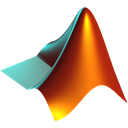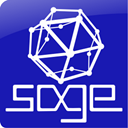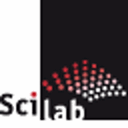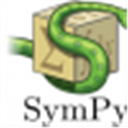Unlocking Your Potential: The Best Maxima Alternatives for Symbolic and Numerical Computation
Maxima is a powerful system renowned for its ability to manipulate symbolic and numerical expressions, handling everything from differentiation and integration to solving differential equations and working with complex data structures like matrices and tensors. Its precision and plotting capabilities make it a go-to for many. However, for various reasons—be it specific feature needs, platform preferences, or budget constraints—users often seek a robust Maxima alternative. This article delves into some of the top contenders that offer similar, and in some cases, even more specialized functionalities.
Top Maxima Alternatives
Whether you're a student, researcher, or engineer, finding the right computational tool is crucial. Here's a curated list of excellent alternatives to Maxima, each offering unique strengths to cater to diverse mathematical and scientific computing demands.

MATLAB
MATLAB is an enterprise-class commercial computing environment and programming language widely used for numerical computation, visualization, and programming. As a robust Maxima alternative, it offers extensive functionalities like Simulink for model-based design and a powerful batch plotting system, available across Commercial, Mac, Windows, Linux, Web, Android, iPhone, and iPad platforms.

Sage
Sage is a fantastic free and open-source mathematics software system, licensed under the GPL. It acts as a powerful Maxima alternative by combining numerous existing open-source packages into a cohesive Python-based environment, offering robust symbolic computation features across Free, Open Source, Mac, Windows, Linux, and Web platforms.

Mathematica
Mathematica stands out as a definitive technical computing system, offering a broad spectrum of features including machine learning, neural networks, data science, and advanced visualizations. This commercial Maxima alternative excels in symbolic computation, calculus solving, equation solving, and graphical component design, available on Commercial, Mac, Windows, Linux, and Web platforms.

Julia
Julia is a high-level, high-performance dynamic programming language specifically designed for technical computing. It serves as an excellent Maxima alternative for users familiar with other technical computing languages, boasting features like automatic JIT compilation, a powerful compiler, and strong parallel computing capabilities, available as Free, Open Source software on Mac, Windows, and Linux.

wxMaxima
wxMaxima is a document-based interface for the computer algebra system Maxima itself, making it an ideal Maxima alternative for those who appreciate Maxima's core functionality but desire a more user-friendly graphical interface. It's Free and Open Source, running natively on Windows, X11, and Mac OS X, and provides strong algebra features.

Xcos
Xcos is a graphical editor for designing hybrid dynamical systems models, allowing users to design, load, save, compile, and simulate models. While distinct, its simulation capabilities make it a useful Maxima alternative for those focusing on dynamic system modeling, available as Free, Open Source software on Mac, Windows, and Linux.

fxSolver
fxSolver is an online math solver, equation editor, database, graphing calculator, and science/engineering problem helper. Its web-based accessibility and features like a formula builder, editable calculations, and extensive library make it a convenient, Free Maxima alternative for quick computations and problem-solving directly in your browser.

SymPy
SymPy is a Python library dedicated to symbolic computation, aiming to be a full-featured computer algebra system while maintaining a simple codebase. As a Free and Open Source Maxima alternative, it's perfect for Python developers, offering strong features in algebra, equation solving, and simulation across Mac, Windows, and Linux.

Maple
Maple is a comprehensive general-purpose commercial computer algebra system that allows users to enter mathematics in traditional notation. It offers advanced graphing calculator functionalities and mechanical simulation, making it a powerful commercial Maxima alternative for users on Mac, Windows, and Linux seeking extensive mathematical capabilities.

GAP
GAP (Groups, Algorithms, Programming) is a system for computational discrete algebra, with a particular focus on computational group theory. It provides a programming language and an extensive library, serving as a specialized Free and Open Source Maxima alternative for those deeply involved in abstract algebra research on Windows and Linux.
The world of symbolic and numerical computation is vast and varied. While Maxima serves as an excellent tool, these alternatives offer diverse strengths, from comprehensive commercial packages like MATLAB and Mathematica to open-source powerhouses like Sage and Julia. We encourage you to explore these options and determine which best aligns with your specific computational needs, budget, and preferred platform.